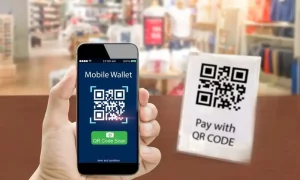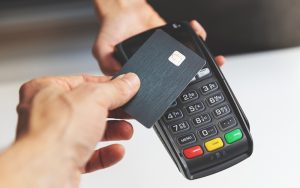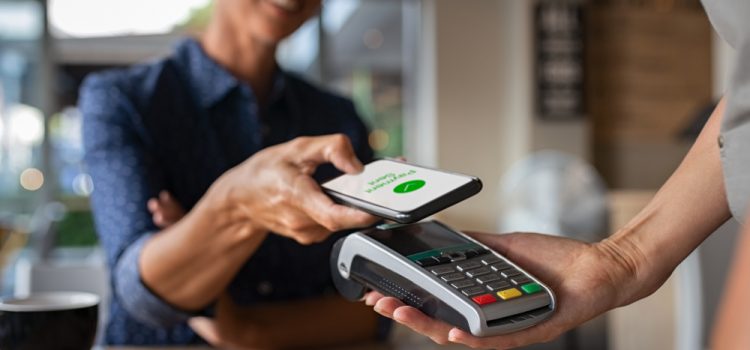
The Rise of Digital Payments: Transforming the Financial Landscape in 2024
The digital payment ecosystem has witnessed a remarkable evolution in recent years, driven by technological innovation, changing consumer preferences, and an increasingly cashless society. In 2024, digital payments are now a mainstream method of transaction, encompassing a wide range of tools and systems that simplify financial exchanges. From QR codes to cryptocurrencies and AI-driven fraud prevention, these new systems are revolutionizing the way individuals and businesses manage payments, while also creating new opportunities and challenges for industries across the globe.
In this article, we will explore the latest trends in digital payments, examining their benefits, real-world applications, and examples from leading companies and emerging markets.
1. The Rise of QR Code Payments

QR code-based payments have become a cornerstone of digital payments in recent years, particularly in emerging markets. In countries like China and India, QR codes have replaced traditional payment methods, making transactions faster and more accessible. The convenience of using a smartphone to scan a QR code for payment has revolutionized how individuals and businesses approach day-to-day financial transactions.
Benefits:
- Simplicity and Convenience: Consumers and businesses need nothing more than a smartphone and a QR code to complete a payment. There’s no need for additional hardware or payment terminals.
- Low Infrastructure Cost: For small businesses and merchants, QR code payments require minimal setup costs, making it an affordable solution to accept digital payments.
- Widespread Adoption: In countries like India, UPI (Unified Payments Interface) has made QR codes ubiquitous, with millions of users transacting via QR codes daily.
Example: India’s UPI and QR Codes
The introduction of UPI in India has significantly accelerated QR code adoption. In 2024, UPI is one of the largest and fastest-growing payment systems in the world, with over 8 billion transactions per month. Through QR codes, merchants can accept payments from any bank or digital wallet, making it easier for users to make both small and large payments without the need for card readers or cash.
2. The Expansion of Buy Now, Pay Later (BNPL)
Buy Now, Pay Later (BNPL) services have emerged as a popular alternative to traditional credit card payments, particularly among younger consumers. BNPL allows customers to purchase goods and services immediately but spread payments over time, typically without interest if paid within the specified period.
Benefits:
- Improved Affordability: BNPL provides consumers with greater flexibility by allowing them to manage their budgets without paying upfront.
- Increased Conversion Rates for Merchants: BNPL has been shown to increase the average order value and conversion rates, as it removes the upfront cost barrier for consumers.
- Attracting Younger Audiences: BNPL services are particularly appealing to millennials and Gen Z, who may be wary of credit cards but still seek the ability to manage purchases in installments.
Case Study: Klarna’s Global Expansion
Klarna, a Swedish fintech company, has become one of the leaders in the BNPL space. By 2024, Klarna operates in over 20 countries, partnering with major retailers like H&M and ASOS. The company has reported substantial growth in transactions, with a significant rise in consumers opting to split their payments into interest-free installments. In 2024, Klarna’s “Pay Later” and “Slice It” services have enabled millions of users worldwide to make purchases with flexible payment options.
Regulatory Scrutiny
Despite its benefits, BNPL is under increasing scrutiny from regulators. As consumer debt levels rise, governments are beginning to examine how these services impact financial health and whether tighter regulations are needed to ensure responsible lending. Some countries, including the UK and Australia, have already implemented measures to curb excessive debt accumulation through BNPL services.
3. Artificial Intelligence (AI) and Machine Learning in Fraud Prevention

As digital payments continue to grow, so do concerns over security. In 2024, AI and machine learning (ML) are being increasingly utilized to combat fraud, offering more robust and real-time security solutions for both consumers and businesses.
Benefits:
- Real-Time Fraud Detection: AI systems can identify and block fraudulent transactions within milliseconds, minimizing the impact of fraud on consumers and businesses.
- Personalized Fraud Protection: Machine learning allows payment systems to adapt to user behaviors and identify unusual activity, offering tailored protection for individual users.
- Lower Operational Costs: AI automates much of the fraud detection process, reducing the need for manual intervention and lowering operational costs for financial institutions.
Example: PayPal’s AI-Driven Fraud Prevention
PayPal is one of the leading companies utilizing AI and machine learning to safeguard digital payments. The company employs advanced AI algorithms to monitor billions of transactions daily, detecting and preventing fraudulent activities in real-time. In 2024, PayPal’s fraud detection system is continuously learning from user data, improving its accuracy and reducing false positives, which enhances the customer experience.
Biometric Authentication
In addition to AI, biometric authentication is becoming an integral part of digital payment systems. Fingerprint scanning and facial recognition are now commonly used to verify transactions, further enhancing security while providing a seamless and user-friendly experience.
4. The Adoption of Cryptocurrencies and Blockchain Technology
Cryptocurrencies like Bitcoin, Ethereum, and stablecoins have gained significant traction as payment options. Many businesses now accept digital currencies, while others leverage blockchain technology to streamline payment systems and reduce transaction costs.
Benefits:
- Lower Transaction Fees: Cryptocurrencies can bypass traditional banking intermediaries, resulting in lower fees for both consumers and merchants.
- Global Accessibility: Cryptocurrencies provide a borderless payment solution, enabling international transactions with minimal fees and near-instant settlement times.
- Increased Security and Transparency: Blockchain technology offers a secure, transparent ledger, reducing the risk of fraud and ensuring the integrity of digital transactions.
Example: Tesla’s Acceptance of Bitcoin
In 2024, Tesla continues to accept Bitcoin as a form of payment for its electric vehicles, reflecting the growing acceptance of cryptocurrencies in mainstream commerce. The decision to allow Bitcoin payments was initially announced in 2021, and despite market fluctuations, the company has maintained its position as one of the most prominent companies to integrate cryptocurrencies into its business model.
Central Bank Digital Currencies (CBDCs)
Central banks around the world are also exploring the creation of Central Bank Digital Currencies (CBDCs), which are government-backed digital currencies. Countries like China have already piloted CBDCs, with plans for wider implementation in the coming years. These digital currencies are seen as a way to modernize the financial system, reduce reliance on cash, and improve the efficiency of monetary policy.
5. The Growth of Contactless Payments

Contactless payments via NFC (Near Field Communication) technology have seen exponential growth in recent years. Consumers can now tap their credit or debit cards, smartphones, or smartwatches to make purchases without entering a PIN or signing a receipt.
Benefits:
- Speed and Convenience: Contactless payments enable faster transactions, reducing wait times at checkouts and enhancing customer satisfaction.
- Health and Hygiene: With the COVID-19 pandemic driving interest in touch-free interactions, contactless payments have become a preferred method for hygienic, low-contact transactions.
- Global Adoption: Major payment providers such as Visa and Mastercard are expanding the use of contactless technology worldwide, making it easier for consumers to pay quickly and securely.
Example: Apple Pay and Google Pay
Apple Pay and Google Pay are two of the leading mobile wallets that support NFC-based contactless payments. As of 2024, both services have expanded globally, allowing users to make payments at millions of locations simply by tapping their smartphones or smartwatches. These mobile wallets are accepted at a wide range of retailers, from restaurants and grocery stores to transit systems.
6. Digital Wallets and Super Apps
In 2024, digital wallets have evolved into super apps, offering a wide array of services beyond simple payments, including loans, insurance, investment tools, and even digital identity management.
Benefits:
- All-in-One Convenience: Digital wallets and super apps centralize multiple financial services into a single platform, reducing the need for users to interact with multiple apps and platforms.
- Enhanced Financial Inclusion: Super apps are especially important in emerging markets, where they provide access to a wide range of financial services to unbanked populations.
- Cross-Platform Integration: Super apps integrate multiple payment methods, including credit cards, BNPL services, cryptocurrencies, and even loyalty rewards, into a seamless ecosystem.
Example: Alipay and WeChat Pay in China
Alipay and WeChat Pay are two of the most successful super apps in the world. They provide everything from bill payments and shopping to investments, insurance, and social networking. In 2024, both platforms have over a billion active users, and their ability to integrate multiple services has made them indispensable in everyday life in China.











